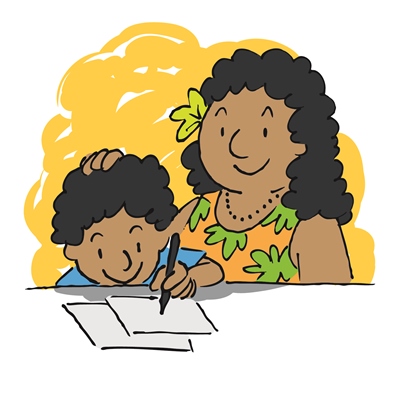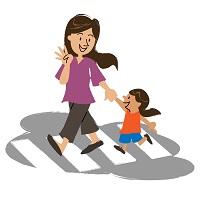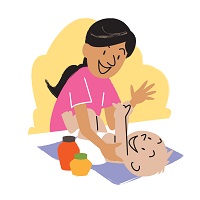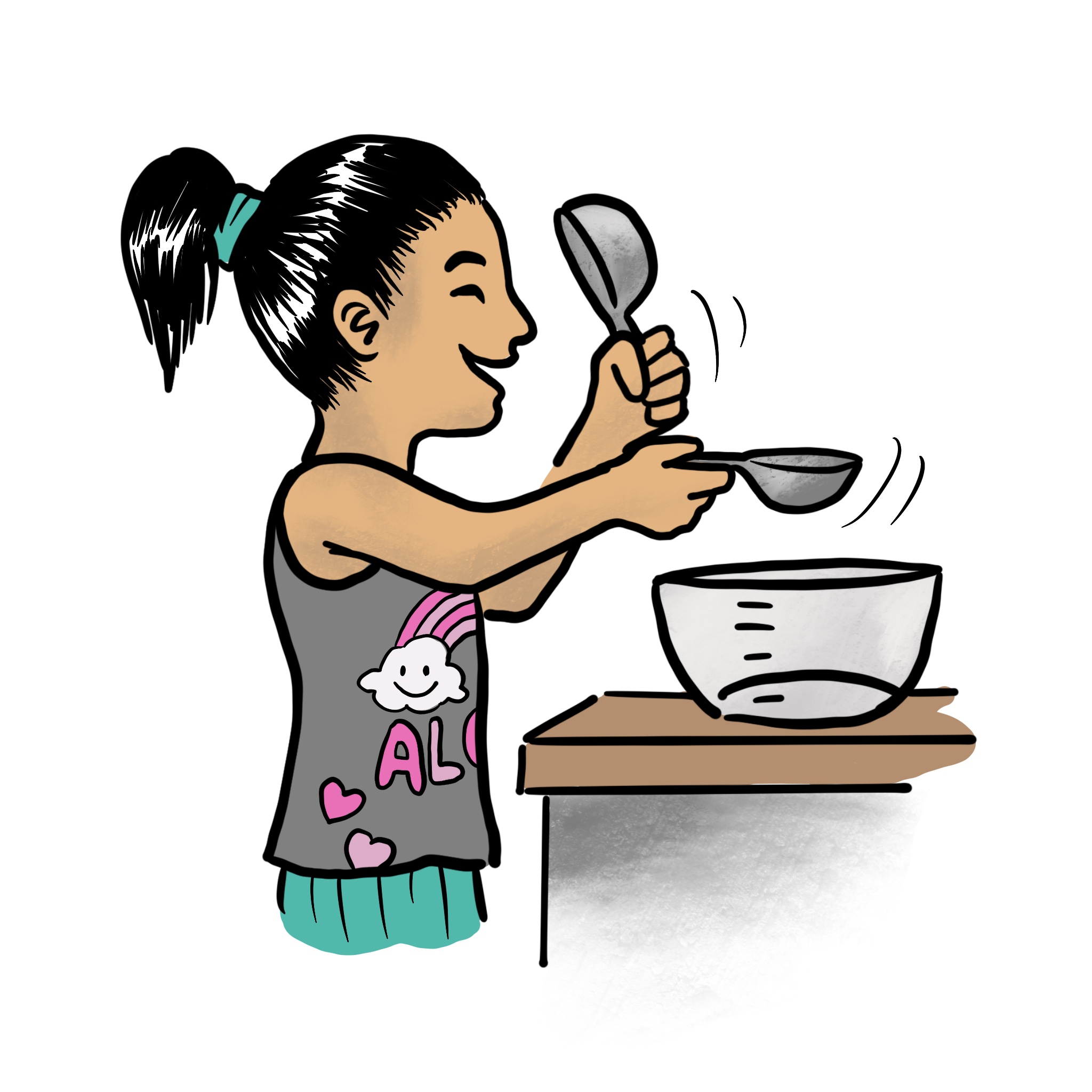
Take a trip to the zoo and enhance literacy development by making a book together.
What You Need:
- Printed photos of 4-5 animals your child saw at the zoo
- Blank pieces of paper
- Glue or Scotch tape
- Marker
- Stapler
What To Do:
- Tell your child you will make a book together about her trip to the zoo.
- Show her the photos and talk about the animals she saw at the zoo.
- Help her glue or tape the photos to the blank pieces of paper (one photo per paper).
- Take turns thinking of a sentence or two for each picture and write them above or below the photo. (For example, “I saw an elephant at the zoo. It was big.”)
- Fasten the pages of the book by stapling the pages together on the left side of the sheets of paper.
- Read the book to your child. Ask your child to “read” her zoo book back to you.
Variation: Make a book for other places you have visited (e.g., beach, park, the market, etc).

Build literacy skills while on a walk in your neighborhood using Science of Reading strategies.
What You Need:
None
What To Do:
- Take your child out for a walk in your neighborhood.
- Point out the print that is all around (the names of the markets, banks, restaurants, traffic signs, etc.) As you point, say it aloud. For example, “This sign says ‘Stop -S-T-O-P’.” (This builds literacy knowledge.)
- Talk about what the business is for. For example, “Safeway is a market. That’s where we buy our food to eat. Let’s see what kind of food is inside Safeway.” Point out some of the foods that your toddler is familiar with. (This builds background knowledge.)
- Point out things you pass on your neighborhood walk – for example, a fire hydrant, a water fountain, a parking structure, the red ginger plant, etc. (This builds her )
- You can talk about the order of the places you saw. For example, “First we passed by the bank, then we went into the market, next we saw the fountain in front of CPK.” (This builds knowledge of language structures.)
- Take your time and have fun interacting during your neighborhood walk!

Build a foundation for reading in infancy with your daily interactions such as during diapering.
What You Need:
- Your normal diapering supplies
- Baby safe mirror
What To Do:
- Change your infant’s diaper where she can see herself in front of a baby safe mirror. Point to her reflection in the mirror and say, for example, “There’s Sophie! That’s you! I see your two eyes, and your nose!” (This builds background knowledge.)
- Narrate your actions as you change her diaper. For example, say, “Now I’m lifting your legs up…up, up, up!” or “Here’s a clean diaper…” (This builds knowledge of language structures.)
- Name the objects you use during your diapering routine (e.g., diaper, wipes, cream). (This builds her )
- You can also describe what your infant might be feeling, e.g., “The wipes are cold! You don’t like it. It’s too cold!” or “Now you have a dry diaper…that must feel good…it’s not wet anymore! Bye-bye wet diaper!”
- End with a short song or rhyme before you lift her up. For example, try this one as you move baby’s legs slow and fast, “Motor boat motor boat go so s-l-o-w, Motor boat motor boat go so fast! Motor boat, motor boat step on the gas!”

Enhance early literacy skills by incorporating the Science of Reading tips into your cooking activities.
What You Need:
- 1 cup flour
- 1 teaspoon baking powder
- ¼ teaspoon baking soda
- Pinch of salt
- 1 cup buttermilk
- 1 egg
- 2 tablespoons melted butter, room temperature
- Toppings of your choice (e.g., strawberries, blueberries, sliced bananas, maple syrup)
What To Do:
- Show your child the recipe and tell her you will be reading these directions (this will build her literacy knowledge).
- Mix dry ingredients in a large bowl. Name each ingredient to build her vocabulary.
- Mix wet ingredients in a medium bowl. Talk about where milk and eggs come from to build background knowledge.
- Pour the wet ingredients into the dry ingredients. Mix until just combined.
- Pour about ¼ cup of batter onto a hot, lightly greased griddle.
- Cook over medium heat until you see bubbles form on the top of the pancake, and the bottom of the pancake is brown.
- Flip, and cook 1-2 minutes more, or until the other side is brown. Ask, “How do we know it’s done?” to build verbal reasoning
- Add toppings! Eat and enjoy!
- While eating, talk about the steps you used to make the pancakes – to build knowledge of language structures.






